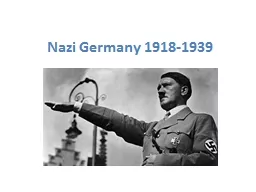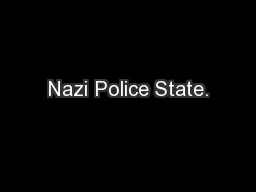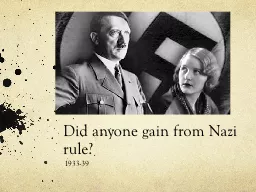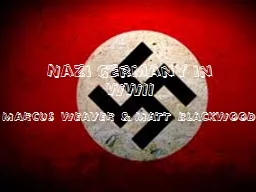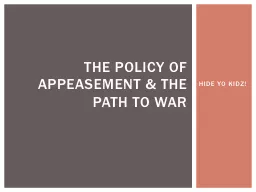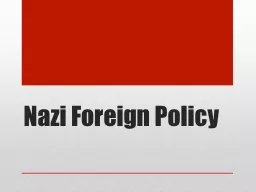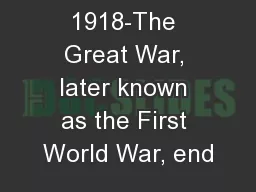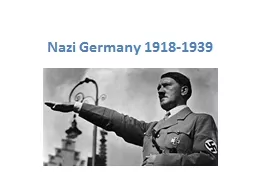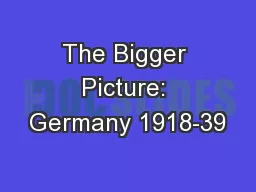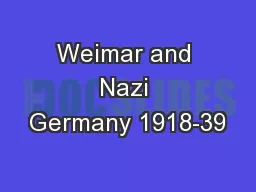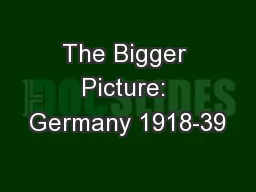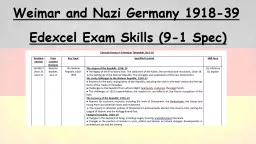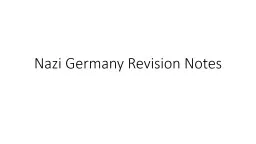PPT-Nazi Germany 1918-1939
Author : olivia-moreira | Published Date : 2017-04-08
Key Topic 1 Weimar Republic 19181929 November 1918 Germany loses WW1 Kaiser abdicates Armistice signed agreement to stop fighting June 1919 Treaty of Versailles
Presentation Embed Code
Download Presentation
Download Presentation The PPT/PDF document "Nazi Germany 1918-1939" is the property of its rightful owner. Permission is granted to download and print the materials on this website for personal, non-commercial use only, and to display it on your personal computer provided you do not modify the materials and that you retain all copyright notices contained in the materials. By downloading content from our website, you accept the terms of this agreement.
Nazi Germany 1918-1939: Transcript
Download Rules Of Document
"Nazi Germany 1918-1939"The content belongs to its owner. You may download and print it for personal use, without modification, and keep all copyright notices. By downloading, you agree to these terms.
Related Documents

